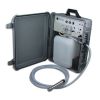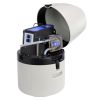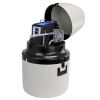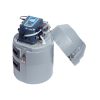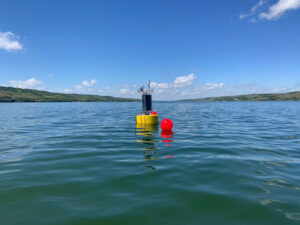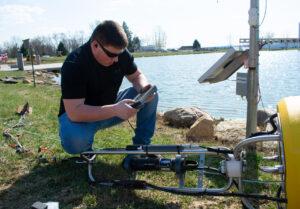Global Water FSS Flow Sampling Systems
Features
- Ideal for wastewater, industrial, and environmental flow sampling
- Supports several different types of flow calculation modes
- Scalable flow proportional sample triggering
- Expedited repair and warranty service
- Lifetime technical support
- More
Composite Water Sampler
Global Water's flow-proportional composite water sampler is enclosed in a rugged, rainproof, lockable carrying container. The composite water sampler includes a 2-gallon polyethylene wastewater sample bottle for collecting composite samples, a peristaltic sampling pump, a control panel (no programming required), and a rechargeable gel cell battery. Also provided is a sample pickup hose and a battery charger. Optional additions include glass sample bottles, refrigerated containers, portable ice containers and more.
Open Channel Flow Monitor
Global Water's FC220 Open Channel Flow Monitor is a reliable and accurate instrument for measuring and totalizing open channel flows for all flumes and weirs, as well as for any gravity-type open-channel flow application. The flow meter measures water depth using any 4-20mA water level sensor's output including Global Water's highly accurate submersible pressure transducer or ultrasonic water level sensor and the flow meter's powerful microprocessor instantly calculates and displays water flow and totalizer values in user selectable units using one of several water flow calculation modes. The Open Channel Flow Monitors have an 8-button keypad that easily guides you through the versatile setup menus.
Flow Data Recorder
Global Water's flow data recorder includes Windows-based and PDA software, which provides many useful features, such as real time monitoring, measurement interval and engineering unit selections, station ID, and sensor calibration. The Global Water Software makes accessing stored data and setting options easy. The flow sampling system monitors both flow rate and total flow recording flow rate and relay output pulses for your records. Data downloaded from the recorder can easily be opened in any PC spreadsheet program for analysis and graphic presentation. NOTE: Model FSS100 flow sampling system does not include datalogger.
In The News
Combating Water Insecurity in Saskatchewan with Real-Time Data
The prairies of Saskatchewan can be described as one of the least water-secure parts of Canada, making water quality monitoring essential for informed resource management in a region already facing water insecurity. While natural physical properties worsen some of the poor water quality conditions in the region, others are connected to land use. Having grown up spending summers on the shores of Lake Huron, Helen Baulch, an associate professor at the School of Environment and Sustainability at the University of Saskatchewan , has always been dedicated to the protection of water resources. Looking back fondly at her childhood playing along the shore, Baulch also recalls the invasion of quagga mussels during her teenage years and watching the lake change as a result.
Read MoreSeametrics Turbo Turbidity Logger: Boost your Turbidity Monitoring
The Seametrics Turbo Turbidity Logger is a self-cleaning turbidity sensor capable of internally logging over 260,000 data records. The sensor enables researchers, compliance officers, and contractors to monitor turbidity in various applications, from construction and dredging sites to wastewater effluent. Due to its narrow width, this device can be deployed in a range of areas, from small well spaces to rivers and streams. The stainless steel housing and built-in wiper allow the sensor to withstand long-term deployments and reduce the need for maintenance trips. The logger accurately records temperature and turbidity up to a depth of 50 meters.
Read MoreCollecting Data at the Top of the World: How Scientists Retrieve Glacial Ice Cores
A helicopter touches down in the small town of Sicuani, Peru, at an elevation of 11,644 feet. Earlier that day, a boxcar brought fuel, drills, food, and other equipment for a glacial expedition. The year is 1979, and glaciologist Lonnie Thompson is preparing to lead a team to the Quelccaya ice cap in hopes of becoming the first scientists to drill an ice core sample from this glacier. The only problem? The glacier is located at 19,000 feet in one of the most remote areas of the world. The helicopter takes off from the town, but the thin atmosphere at that elevation does not allow it to safely touch down on the ice– due to the aircraft’s weight, and it becomes unstable when the air is less dense.
Read More














